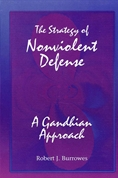
Case Studies
There are many case studies of nonviolent action. I have carefully selected a range of these because they illustrate basic or important points about nonviolent strategy. If you click on any of the links below, you will be able to read (and download) that particular case study.
1. Jupiter Island Blockaded in Yarra River (Australia, April 1989) This case study describes the planning and preparation for, as well as the implementation of, the river blockade of the rainforest timber ship Jupiter Island by the Melbourne Rainforest Action Group (MRAG). This river blockade was the first (of more than 20) undertaken by MRAG in its ultimately successful campaign, in collaboration with other RAGs around Australia, to end rainforest timber imports into Australia. If you would like to read a further report on this group, an article written a year later offers some insight into MRAG’s progress: Nonviolent Struggle for the Rainforests. You can also watch a 15 minute video, with graphic images of nonviolent actions, of the MRAG campaign here:
2. Hugging the Trees: The Story of the Chipko Movement (India, 1731 & 1973) This case study, extracted from Thomas Weber’s book of that name, tells the story of the Himalayan Chipko activists who hugged trees in 1731 and 1973 to prevent logging of trees targeted for felling. The earlier version of this movement illustrates the courage and sacrifice that sometimes accompany successful nonviolent action; the latter version of the Chipko struggle inspired the modern environmental movement.
3. How We Really Shut Down the WTO (USA, November 1999) This case study, written by Starhawk, describes the planning and preparation for, as well as the implementation and coordination of, the blockade around the World Trade Organization meeting held in Seattle to plan further aspects of the globalization agenda. Starhawk also describes the decision-making structure and process used at the venue to coordinate large numbers of nonviolent activists with a diverse range of views, as well as the empowering jail experience of those activists imprisoned.
4. The Mothers of the Plaza (Argentina, 1977) This case study, written by Pam McAllister, describes the courageous women of Argentina who, inspired by Azucena De Vicenti, organized the powerful nonviolent actions designed to draw attention to the disappearance of their children and to find out what had happened to them, during the brutal military dictatorship of General Jorge Rafael Videla. McAllister also describes the organization and courage needed to withstand the brutal repression, including murders, they suffered and their phenomenal impact both within and beyond their own country. Another account, written by Lester Kurtz, offers a description of the international political context and explains how the Mothers both used and were assisted to use this effectively. See Lester Kurtz ‘The Mothers of the Disappeared: Challenging the Junta in Argentina (1977-1983)’ July 2010.
5. Australia’s Indigenous Peoples Stride Toward Freedom (Australia, 1990) This case study briefly describes the ongoing nonviolent struggle, now in its 230th year, of the indigenous peoples of Australia for sovereignty, land rights and self-determination.
Source of this document: https://nonviolentstrategy.wordpress.com/case-studies/